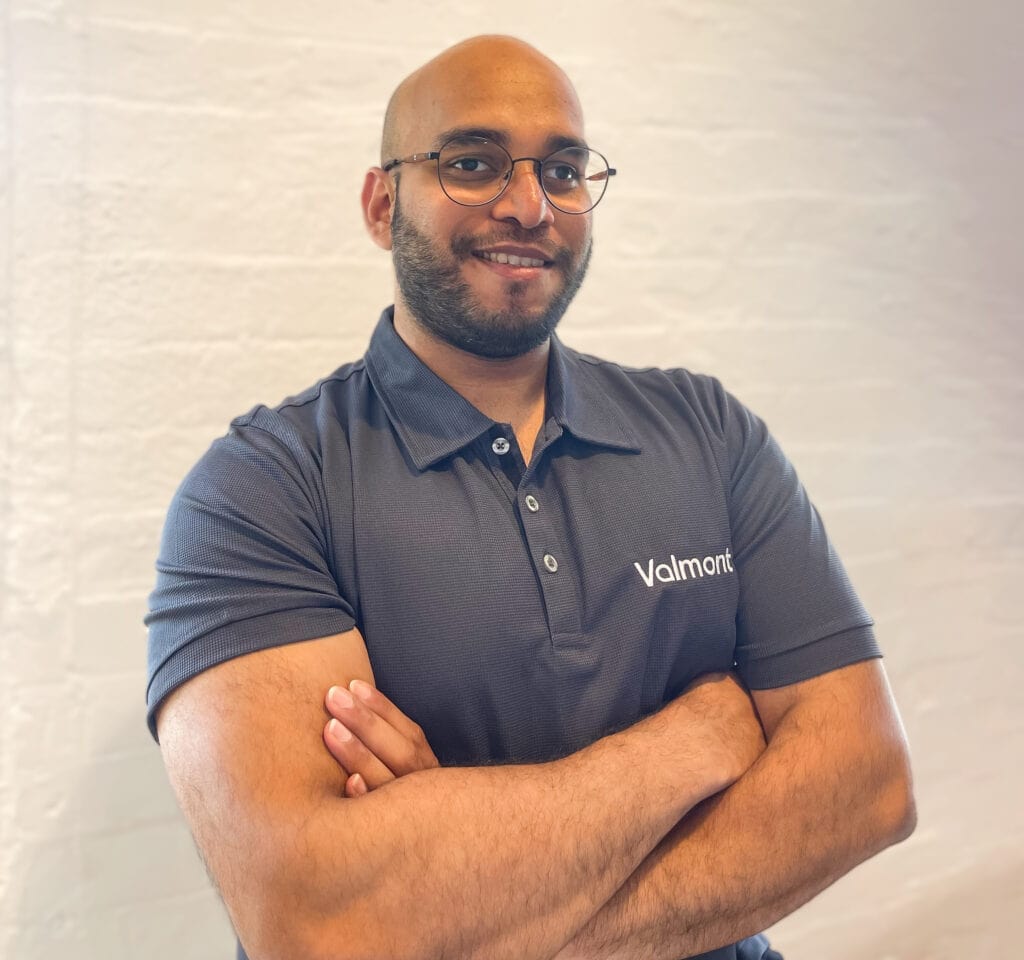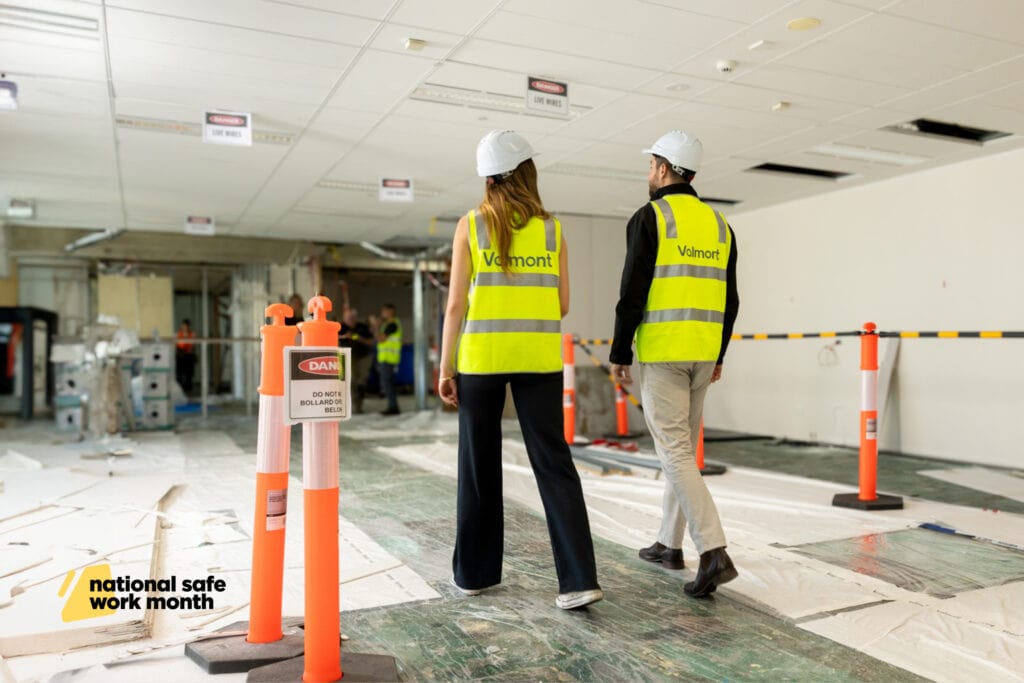October is National Safe Work month, and to help drive greater awareness and action, our HSEQ Leader, Jasmin Shelley, is publishing articles that align with Work Safe month’s weekly themes. Jasmin is also connecting with onsite team members to hear their perspectives. Jasmin joined Valmont early in 2023. She is currently studying Neuropsychology and has a passion for psychosocial health.
This week, the work safe theme is Working Together to Create a Safe and Healthy Workplace. As the final post in the Safe Work series, Jasmin sets out the importance of developing and maintaining safe and healthy working environments that enable team members to feel valued and included, and allow the whole workplace to thrive.
___
It’s crucial to have the right policies and procedures in place, but building a robust safety culture that is embraced and supported by everyone within an organisation is equally essential. A strong safety culture is one where the right to a safe and healthy workplace is valued and championed across the whole team. A positive safety culture is founded on inclusivity, collaboration, and ongoing consultation, involving all stakeholders in the continuous improvement of safety and health at work.
This ethos embodies our Valmont Safety Culture. As we reflect on the first three topics of Safe Work Month, we recognise how they all influence our Safety Culture. We have discussed our shift towards user-focused safety protocols, empowering our people to prioritise safety as opposed to just ‘ticking boxes’. We’re committed to embracing ‘Safety Differently’, a mindset that frees our onsite team leaders from excessive paperwork and empowers them to focus on the core mission of keeping our people safe.
Moreover, I recognise the importance of our HSEQ team on work sites. As a relatively new member of our team, I’ve embarked on national roadshows to bridge the gap from a paper-based safety culture to one that is integrated into our daily on-site activities. It’s essential that our HSEQ team maintains a close relationship with our site teams, ensuring that everyone feels confident in raising safety concerns. Open communication and dialogue are fundamental principles that we passionately uphold.
In truth, visiting sites isn’t just a part of my role; it’s something I genuinely enjoy. If you’re looking for me, chances are I’m on-site!
Additionally, our sister company, Geyer, specialises in creating workplace environments that celebrate diversity and inclusion to enable communities to thrive within. We’ve adopted many of their strategies, and I’m confident that our Safety Culture is robust and continually improving. I’m immensely proud of our team and the strong camaraderie that extends to our subcontractors and consultants, ensuring a unified commitment to safety.
Finally, creating a safe and healthy workplace is never stagnant but continually evolving. We are behind the scenes exploring AI opportunities to further equip our teams with cutting-edge efficiencies. We believe that by staying at the forefront of advancements, we can better protect our team and their wellbeing.
Together, we will continue to strive for excellence in safety, health, and wellbeing of everyone in our organisation, along with our sub-contractor colleagues and external consultants.
Let’s hear from Nathan Fernandes, Project Manager at our Melbourne office, about his perspectives on our efforts to create a safe and healthy workplace.

Firstly Nathan, how do you build a strong Safety Culture on your sites?
I have a wide range of actions and activities that I tailor to suit each site, some key ones being:
- Allocate necessary resources for safety measures and training, which includes additional labour if required.
- Develop clear and comprehensive safety policies and procedures through the use of HSEQ Boards, Daily pre-starts, and ensure these policies are accessible and regularly updated.
- Encourage the reporting of unsafe conditions or incidents in daily prestart and sub-contractor toolbox meetings.
- Provide safety training to all Site Managers and ensure they have a fortnightly catchup with the Construction Manager and HSEQ lead.
- Ensure that sub-contractors understand potential hazards and how to mitigate them through the use of their SWMS. This way we hold subbies accountable for their roles in maintaining safety, ensuring everyone goes home safely.
- Regularly review safety policies and procedures for effectiveness.
- Displaying the emergency response plan and ensuring all sub-contractors are familiar with it, and conducting drills to practice response to potential emergencies for projects longer than 3 months.
- Maintain incidents reports and inspections via our internal construction management system, and informing Work Safe when required.
What are some of the challenges you face with implementing a safety culture, and how do you address them?
Managing people entering or exiting the site at all times proves a challenge. A way to tackle this is the ensure the Site Manager has the capabilities to manage this aspect effectively – ie., not being on the tools, using a leading hand when sites get busy during deliveries, positioning the site office so there is clear line of site of the entrance/exit, signage clearly signalling that everyone must sign in before entering.
If you have any safety concerns, how do you raise them? What’s the process after you raise them?
The first point of action is to refer the non-negotiables that each Site Manager has. If there’s still further query it can then be raised to our national HSEQ lead who is always available via team, emails or phone. Once raised, the HSEQ team reviews and helps in advising a solution. If the query is repetitive and occurring on muiltple sites, it would be added to the non-negotiables list/Procore forms and inspections.
At Valmont we promote a very open culture practice where no query however insignificant should go unanswered. An effective way we administer this is via fortnightly meetings we have with all our Site Managers to discuss progress on sites, issues and query raised, etc.
And lastly Nathan, do you have any ideas or suggestions to strengthen a site based safety culture?
A key thing would be to implement an incentive program to recognise and reward safe behaviour. I think this would go a long way toward further strengthening what we already have in place.
___
